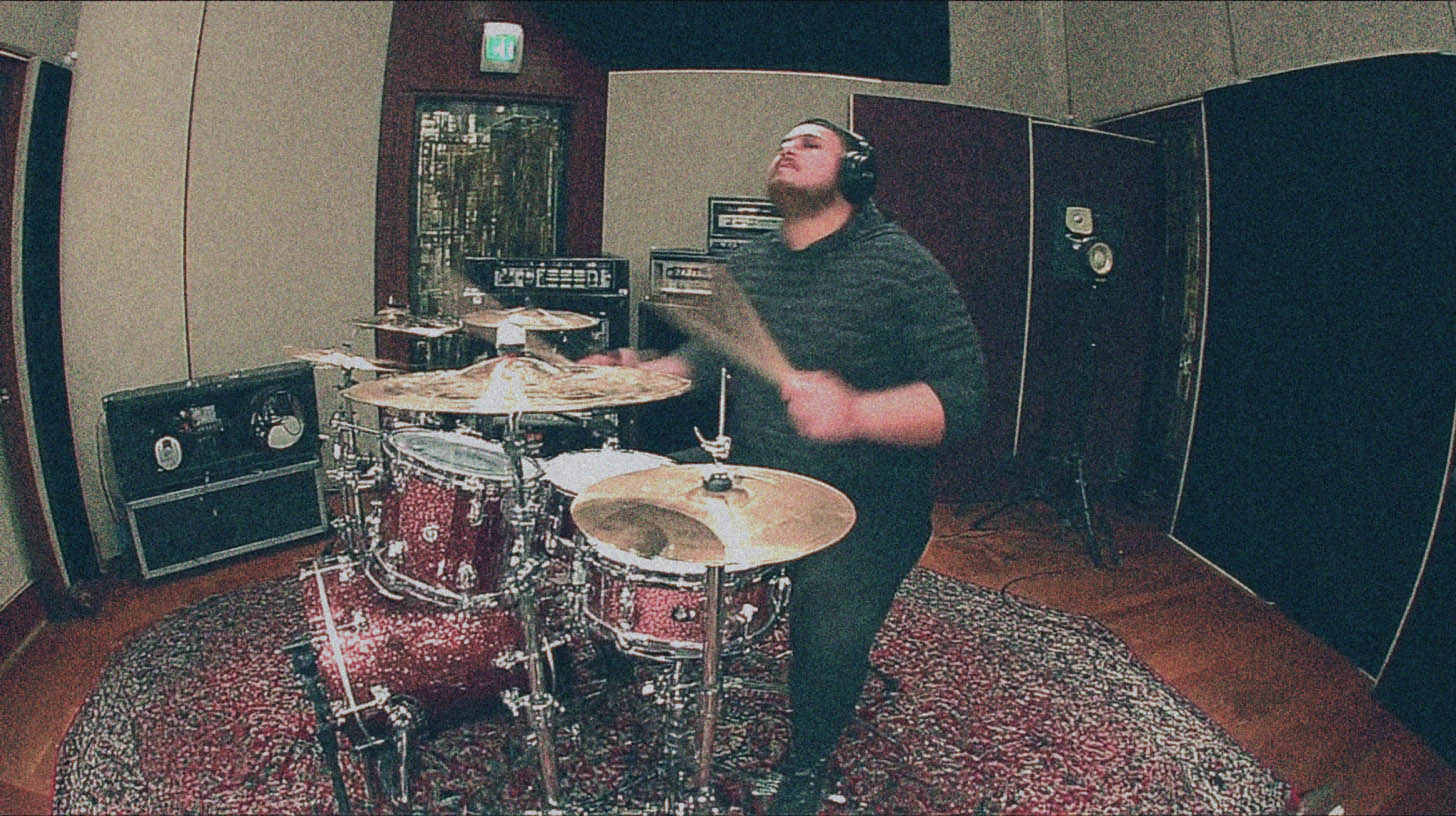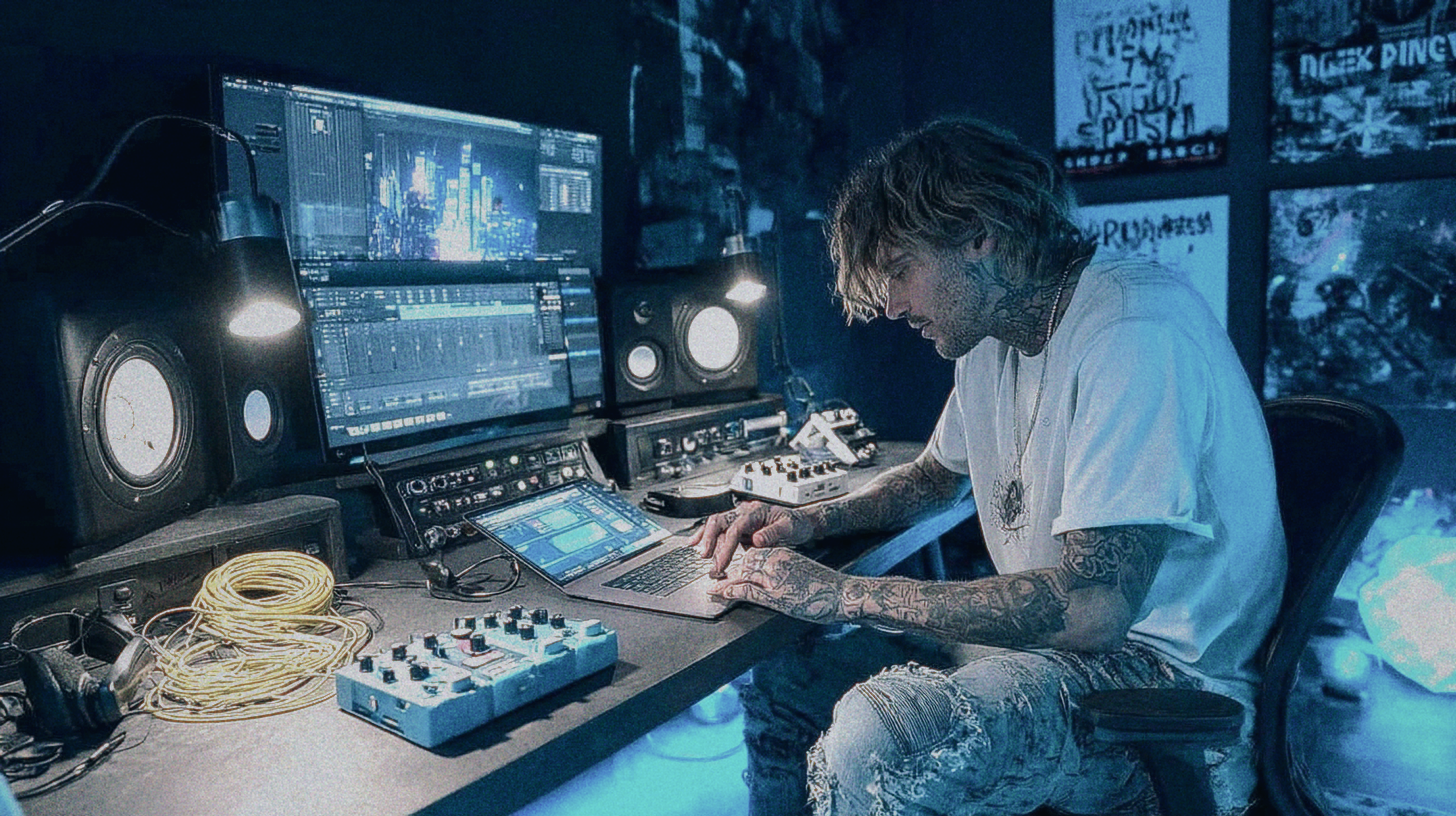
Mixing Atmospheric Architects Vocal Effects with Henrik Udd
Nail The Mix Staff
The vocal sound of Architects is nothing short of colossal. It’s a masterful blend of raw aggression and vast, atmospheric space that defines their modern metalcore sound. Ever wonder how they craft that sonic landscape? We got a look under the hood as producer/mixer Henrik Udd broke down some of the vocal effects he used on their tracks.
Forget just slapping a single reverb plugin on a track and calling it a day. Henrik’s approach involves layering, creative routing, and knowing when to use effects—and when not to. Let’s dive into some of the techniques he uses to give those vocals their iconic character.
Different Effects for Different Vocals
A core principle in Henrik’s approach is treating clean vocals and screams as two separate beasts. They serve different purposes in the mix, so they need different effects.
Keeping Screams Upfront
For screamed vocals, the goal is aggression and clarity. You want them to feel like they’re right in your face, not washed out in a sea of reverb. Henrik uses significantly less reverb on screams for this very reason. A shorter, more subtle reverb can give them a sense of space without pushing them to the back of the mix. This ensures every ounce of raw energy hits the listener directly.
Expanding the Cleans
Clean vocals are where you can get more atmospheric. Henrik uses a more generous amount of reverb on clean passages to make them feel wide, deep, and emotive. He specifically points to a classic Lexicon reverb as one of his go-to tools for this.
To make these spacious reverbs sit perfectly, you need to shape their tone. You don’t want a muddy low-end or harsh high-end from your reverb return clouding the mix. This is where smart processing on your effects bus comes in. By using targeted EQ on your reverb, you can filter out unnecessary frequencies and make it blend seamlessly with the rest of the instruments. For a deeper dive into this, our EQ strategies hub page is packed with techniques for carving out space in a dense metal mix.
Creative Ear Candy and Movement
Beyond foundational reverbs, special effects—or “ear candy”—are what make a vocal track truly memorable. Henrik uses several tricks to add movement and texture that catch the listener’s ear.
The Classic Reverse Reverb
One of the coolest effects in his arsenal is the reverse reverb, a staple for creating swells and transitions. And the best part? You can create it in any DAW. Henrik shows how to do it easily in Pro Tools:
- Isolate and Duplicate: Copy the word or phrase you want to affect onto a new audio track.
- Reverse the Audio: Using an offline process (like AudioSuite in Pro Tools), reverse the duplicated audio clip. It will now sound backward.
- Apply Reverb: Add a 100% wet reverb to the reversed clip. A long, dense hall or plate reverb works great here.
- Render the Effect: Print or bounce this reverb onto the audio track. You should now have a clip of just the reverb tail, which swells in volume.
- Reverse It Again: Reverse the new reverb-only audio clip one more time.
The result is a ghostly reverb swell that leads perfectly into the original word. Henrik also mentions filtering the effect a bit, likely to remove any harshness and help it sit better.
Panning for Width and Drama
Static effects can get boring. To create a more dynamic and immersive stereo field, Henrik uses automation. He mentions using an auto-panner on certain ad-libs or layers to create subtle, rhythmic movement.
For more dramatic moments, he turns to manual automation. For example, he’ll take a long, nine-second reverb on a specific phrase and automate the pan so the massive reverb tail sweeps from one side of the stereo field to the other. This is a powerful way to make an epic moment feel even bigger.
The Secret Weapon: Chaining Your Effects
Here’s a truly pro-level trick that Henrik Udd shared: sending one effect into another. This can create incredibly rich and complex textures that you can’t get from a single plugin.
His “shimmer” technique is a perfect example. Instead of just sending a vocal to a long reverb, he routes it like this:
Vocal Track -> Send to Reverb 1 (a standard reverb) -> Send that reverb’s output to Reverb 2 (a very long, 9+ second reverb)
By feeding a reverb into another reverb, you get a beautiful, evolving wash of sound. The second reverb blooms and decays in a much more complex way, creating a “shimmery” texture that’s perfect for adding an ethereal quality to clean vocals or atmospheric layers.
Knowing When to Stay Dry
Perhaps one of the most important lessons is knowing when not to use effects. In the track, Henrik points out a specific line (“God knows”) that he intentionally keeps almost completely dry.
After building up huge, reverb-drenched sections, dropping to a dry, punchy vocal creates massive impact and contrast. It re-centers the listener’s ear and makes the line hit with more force. Of course, for a dry vocal to cut through a heavy mix, it needs to be solid and controlled. This is where a great vocal chain with tight dynamics comes into play. Having a well-set compressor is key to keeping that vocal present without effects. If you want to master your dynamics, check out our guide to metal compression secrets.
Take These Tricks to Your Next Mix
So, to get that Architects-style vocal vibe, you need to:
- Treat screams and cleans differently with effects.
- Use creative ear candy like reverse reverbs and pan automation.
- Experiment with advanced routing like chaining reverbs together.
- Use contrast by leaving key phrases dry for maximum impact.
Trying these techniques is one thing, but seeing them dialed in, in real-time, by the producers who crafted the albums you love is a whole other level of learning. On Nail The Mix, you can watch world-class producers mix real songs from bands like Gojira, Periphery, and Beartooth, and you get the multi-tracks to mix them yourself.
Architects on Nail The Mix
Henrik Udd mixes "Gone With The Wind"
Get the Session
If you’re ready to go past presets and learn how to make these kinds of creative mixing decisions on your own, see how you can unlock your sound and start mixing modern metal today.
Get a new set of multi-tracks every month from a world-class artist, a livestream with the producer who mixed it, 100+ tutorials, our exclusive plugins and more
Get Started for $1






